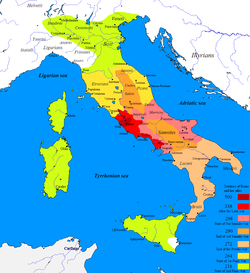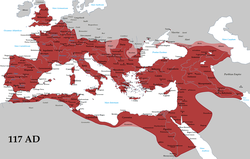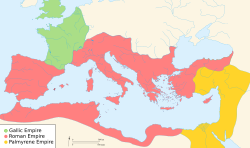This article needs additional citations for verification .(April 2023) |
 |
| Part of a series on the |
| Military of ancient Rome |
|---|
The following is a list of Roman external wars and battles [1] fought by the ancient Roman Kingdom, Roman Republic and Roman Empire against external enemies, organized by date. For internal civil wars, revolts and rebellions, see List of Roman civil wars and revolts.














